Planning to invest in real estate but not sure what strategy to go for? Keep reading ‘cause there’s a new investment trend you might want to explore.
The real estate market always has new trends that investors can adapt to in stepping up their game. Watching out for these shifts is helpful in keeping up with the demands and being able to make a profit out of it.
If you want to establish a passive income-generating business out of the real estate, then rentvesting might just be the best option to choose. Rentvesting is the most recent trend in the real estate industry that has shown positive returns for investors like you.
If you’re intrigued, here is what you need to know about rentvesting and how you can effectively join the trend.
Rentvesting an Investment Property
What is Rentvesting in Real Estate?
Rentvesting is the idea of investing money in rental properties. The idea of rent vesting has been around for years but it was only recently that it became popular in countries like Australia. So well-known that people in the industry have come up with a term for the act.
In rentvesting, investors have two uses for the properties that they decide to buy. They can either purchase a condominium for sale for business purposes only or for personal living as well. Meaning, they can choose to live in the property that they’re renting out for other potential residents. Investors who “rentvest” may or may not be tenants of the property they have purchased but they are most definitely the landlords.

Rentvesting is an efficient way to get on top of the market without the risk of spending too much and wasting your money on waiting for one-time big-time sure buyers. To demonstrate, rentvestors have the ability to buy an affordable pre-selling lot for sale and turn it into an apartment complex based on their budget. They can then put the rooms for lease while also living in the complex themselves. What this does is create an avenue for passive income to generate while also securing a home for the investors. They can hit two birds (purchasing a home and having a business), with one stone (rentvesting) if they can find the right balance.
What’s the difference between a rental property and an investment property?
Now, for those who haven’t heard of rentvesting before, they might find a rental property and investment property as confusing terms. To clarify, a rental property is an estate that is purchased by investors for the purpose of renting the place out and generating income.
Similarly, investment property is a property that is bought also for the purpose of profit. Investors have the option to rent it out or they can just hold onto it while waiting for a rise in property value before selling it to interested buyers.
Furthermore, rental property has a standard form meant to satisfy their clients or residents. Investment properties on the other hand are more flexible. They can be modified, altered, or turned into something new that can separate them from a typical rental.
In other words, all investment properties can be rental properties but not all rentals are flexible enough to be investment properties. One can say that all yachts are technically boats but not every boat can be considered a yacht.
Best Returns on Investment Property
Now that you have an idea of what rentvesting is, finding out its advantages is the next step.
Why consider getting an investment property?
At first, paying a mortgage while renting might not be the most sensible idea out there. It’s easier to settle with just buying the house. But for those who want to maximize their investment properties, rentvesting makes sense. It will all depend on what budget you have and the lifestyle that you’re aiming for.
As an example, if you really want to enter the real estate market as a homeowner but your budget can’t afford the house you want yet, you can use the money to start a rental first. You can also choose to live in it or have it completely rented out by tenants. The money generated from the rental will keep coming. Meanwhile, if you were able to purchase a cheap house and lot properties for sale, their value can increase as your tenants pay rent and boost the property’s value.

This gives you ample time to save up for the ultimate home you want by letting your money grow through rentvesting. Rentvesting truly allows rentvestors to get the best out of two different worlds.
You can buy house and lot properties on sale in Alabang, rent them out, and acquire money to pay for other daily costs like living in a condominium in Sta Rosa Laguna.
If you only choose to rent or live in your current home, you won’t get the chance to explore the real estate market and expand your sources of income. Rentvesting lets you live wherever you desire while benefiting from the real estate industry.
How to start your investment property venture?
Rentvesting has its ins and outs. It can get quite complicated for first-time investors. If you’re planning to get an investment property and try rentvesting for yourself, here are five steps to follow to get you started.
1. Research and study your local real estate market.
Before anything else, gathering data is important if you want to increase the success rate of your investment. Find areas that can promise growth of value in the long run.
2. Compare findings on rental value and pick the highest income rate.
Unless your budget allows you, you must only choose the best area for your venture instead of investing in all of the options.
3. Save up for a deposit and apply for a loan in that area.
Consider the price range of the property and prepare a deposit for the loan.
4. Purchase the estate and hire a professional property manager.
Once you’ve bought the property, have some expert to help you manage it so things don’t get too overwhelming and out of hand.
5. Have it ready for occupancy and let the business run until you reach your goal.
Maximize the investment property by moving in or selling it once you’ve reached a goal.
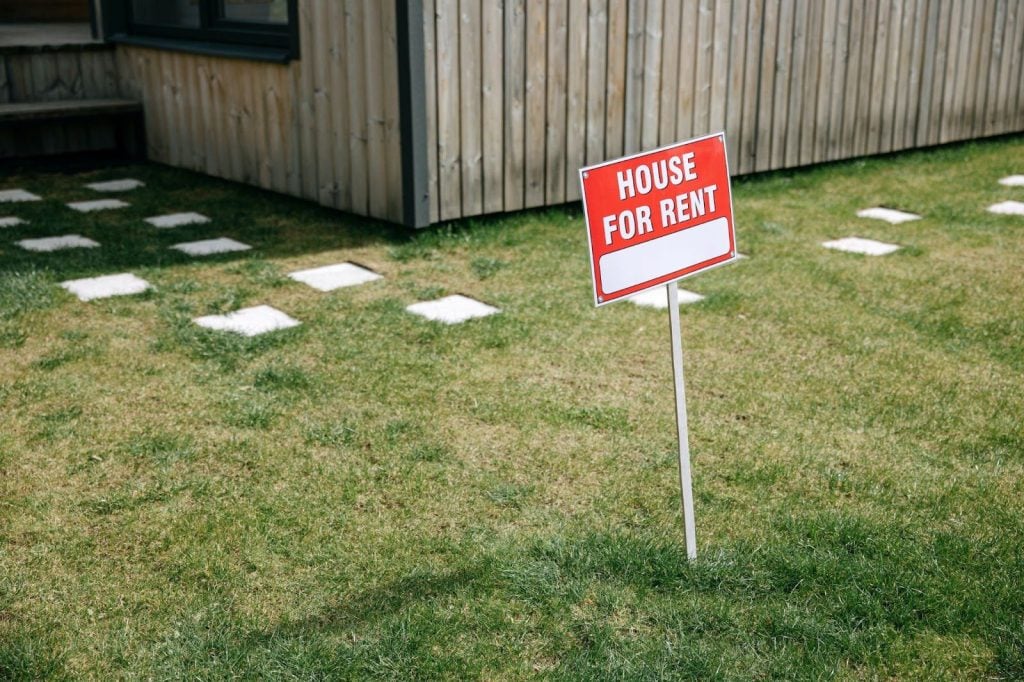
Where to get the best property deals?
There are tons of house and lot properties for sale in the market but getting the best deal takes careful consideration. Whether you want to begin investing in vacation rental properties or getting a pre-selling lot for sale, you have to be a wise investor.
If you’re looking for one of the most beautiful houses in the Philippines, Brittany Corporation has something to offer. Being a Vista leasing company, they have several properties that are perfect for your rentvest journey. Brittany is a reputable developer. Discover their condominium for sale in Sta Rosa Laguna or potential rental properties in Alabang. There are plenty of luxury and high-quality estates to invest in.
Putting a luxury house and lot for rent or a condominium for sale won’t be easy. But if you embrace the inner workings of rentvesting, you will surely benefit more than not trying at all.
Don’t forget to check out Brittany Corporation’s offers and reach the future you want through rentvesting. You sure will not regret checking on their quality properties that will be good for your investment.
Suggested Read: 8 Things To Consider When Buying A Vacation Home
Suggested Read: Rent Or Own: How To Decide Which Is Best For You
Suggested Read: How To Increase Your Real Estate Cash Flow
Suggested Read: Vacation Homes That Define Luxury
Real estate valuation and air rights are complex topics. This comprehensive guide simplifies the process of evaluating properties.
Air rights are an essential concept to understand regarding real estate valuation. They refer to the ownership of space above a parcel of land or building. These air rights can be sold, leased, or transferred in other ways, allowing people to use space that would not have been possible otherwise. This guide will provide an overview of air rights, their value, and how they influence real estate investments in New York City or elsewhere.
What Are Air Rights?
They refer to the ownership of air space above a parcel of land or building. An owner has the legal right to use this airspace for any purpose that does not interfere with public utility usages such as electrical lines and telephone poles. The local government usually grants these rights and can be bought, leased, or transferred in other ways from one party to another. The ability to purchase these air rights allows people to make use of space that would not have been possible otherwise.
The term “air rights” can also refer to the ability of a building owner or tenant to use airspace. This is typically done through an easement that grants permission for aerial access by certain parties. Examples of such activity would include using drones or helicopters to film or take pictures, or flying banners overhead in order to advertise a product or event. Depending on local regulations, they can be bought and sold alone or as part of the original land purchase agreement.
Air rights may also be used in the context of zoning laws which forbid the construction of buildings higher than a certain height above ground level. In these cases, developers may purchase them from adjacent properties in order to build taller structures safely and legally. Ultimately, they are a useful and innovative way to maximize the potential of real estate investments.

Types of Air Rights
There are two main types of air rights: the surface air rights and subsurface air rights. Surface air rights refer to the ownership of airspace up to a certain altitude above the ground or building. Zoning laws generally limit this and typically allow construction up to 200 feet in some cities. Subsurface air rights refer to the underground area below a parcel of land or building, such as mines, tunnels, basements, sewers, and other infrastructure. Local governments usually own these and can be leased out for particular projects.
They can be used to increase the value of a property by allowing for construction that would not otherwise have been possible due to zoning regulations. For example, air rights might enable developers to build taller buildings or expand existing structures. Furthermore, they can also help preserve historical sites and promote urban development.
Valuation of Air Rights
The valuation of air rights is often complicated due to the fact that they are intangible and have no physical form. Generally, the value of air rights is based on the potential for development or increased value of a parcel of land or building due to the addition of airspace. This can be determined through market analysis and comparison with similar properties in the area or by using various formulas and methods such as discounted cash flow analysis.
In order to properly value air rights, it’s important to consider the zoning regulations of the area. Zoning regulations affect how high a building can be built and how much space is allowed for development. In addition, any potential restrictions such as viewsheds or noise levels must also be taken into consideration. It’s also important to factor in the cost of demolition or relocation if necessary.
The development potential of a property is also important when it comes to valuing air rights. The value of an airspace parcel can be determined by looking at the potential for development and how much additional value could be generated by adding an extra story, roof access or other features. They can also be estimated by comparing the value of similar properties in the area.
Air Rights and Real Estate Investments
Air rights are an important consideration when it comes to real estate investments, whether in a luxury house and lot in Metro Manila or a property in Forresta. The ability to purchase these rights can add significant value to an investment property due to the potential for added space, additional rental income, or even redevelopment. They also provide investors with more flexibility when it comes to developing their properties since they do not have to worry about local zoning laws as much.

Transferring Air Rights
The transfer of air rights is often complicated due to the fact that they are intangible and have no physical form. Generally, these transfers occur through contractual agreements between the parties involved. It is important to keep in mind that there may be restrictions on the types of uses allowed for transferred air rights. In some cases, local zoning laws will dictate what type of development can take place with transferred air rights.
Taxation of Air Rights
Air rights are not typically taxed as real estate in most jurisdictions, such as Crosswinds Tagaytay, since they have no physical form and cannot be assessed as a property value. However, if an owner develops or transfers their air rights, then they may be subject to taxation depending on the jurisdiction in which they reside.
How Can You Apply When Investing in Real Estate?
Air rights, also known as development rights or transferable development rights (TDRs), are a valuable asset within urban real estate. They give developers the right to develop property beyond what is traditionally allowed by local zoning laws. By utilizing air rights in their real estate investments, investors can increase the value of their properties and potentially generate higher returns on investment.
Air rights are often seen in commercial developments where unused space on a building’s roof or courtyard is sold and developed into additional floors. This allows for more efficient use of existing land and can be used to add more residential units, retail spaces, office space, hotels, and other types of businesses to an area. Air rights can also be leased out for short-term uses such as advertising or events, providing an additional income stream for the property owner.
When investing in a luxury house and lot in Metro Manila with air rights, investors should take into account any restrictions that local zoning laws place on development. It is important to understand the parameters of what can and cannot be done before making a decision to purchase the rights.
Air rights can prove very profitable when used correctly in high-density urban areas, but they may not be worth anything in lower-density neighborhoods. Investors should also consider how much money it will cost to develop their project and whether any tax incentives are available from the local government to offset some of these costs.
Final Thoughts
Air rights are an important concept to understand when it comes to real estate valuation, such as investing in a luxury house and lot in Metro Manila. They can be bought, leased, or transferred in other ways between parties and allow people to use space that would not have been possible otherwise.
Air rights are also important for investors as they can add significant value to a property due to the potential for added space or redevelopment opportunities. The transfer of air rights is often complex, so it is important for all parties involved to know what type of development is allowed and if any taxation may apply. Understanding air rights is essential for anyone looking to get involved in real estate investments, like when you’re buying a property in Forresta.
Suggested Read: A Life Well Lived: Best Ways To Live In Tagaytay
Suggested Read: Understanding Property Valuation And Appraisals
Suggested Read: Taxes When Buying A House In The Philippines
Suggested Read: Property In The South: Five Reasons To Buy
Suggested Read: Quick Guide: Buying Property During ECQ
World Health Day is a global event celebrated each year on April 7th. World Health Day seeks to increase awareness of health and well-being for all this year.
This year marks the 75th anniversary of World Health Day, and it is a time to celebrate the progress made in improving global health outcomes over the years. On this day, we also look ahead with optimism to continued efforts to make health and well-being accessible to everyone, everywhere.
As part of this celebration, we will examine some of the challenges faced by communities around the world regarding access to healthcare, prevention and treatment measures against noncommunicable diseases (NCDs), and emergency preparedness and response, among other topics. We will also explore ways different stakeholders can help ensure that “health for all” becomes a reality.
Access to Healthcare
Access to quality healthcare is one of the most pressing issues in global health. Millions of people worldwide still lack access to basic services such as primary care, immunizations, and essential medicines. In some parts of the world, physical barriers like distance and inadequate transportation make it difficult for individuals to seek medical treatment when needed.
In other areas, cultural or systemic factors may prevent individuals from seeking necessary care because of a lack of understanding or trust in the healthcare system. Poverty is another significant barrier limiting an individual’s access to medical care due to financial constraints or a lack of insurance coverage.
The lack of access to quality healthcare significantly affects public health, with those living in poverty and the most vulnerable populations being at the greatest risk. It is estimated that over half of all deaths globally are due to preventable causes that could have been treated or avoided with better access to healthcare.
In addition, millions of people suffer from chronic diseases and disabilities that could be managed more effectively with appropriate medical services. These conditions have a significant financial impact on individuals, their families, and their health systems.

Focus on Noncommunicable Diseases (NCDs)
Noncommunicable diseases (NCDs) such as cancer, heart disease, and diabetes are the leading cause of death worldwide. NCDs disproportionately affect low- and middle-income countries, accounting for more than 70 percent of all global deaths.
As these conditions become even more prevalent worldwide, it is important to continue progressing in prevention and treatment efforts. This includes raising awareness about lifestyle changes that can reduce the risk of developing an NCD, increasing access to early diagnosis and care services, and encouraging appropriate management strategies to help maintain good health outcomes.
Emergency Preparedness and Response
In addition to working to prevent illnesses and promote better health outcomes, it is essential to have a plan in place for responding to health crises. This includes natural disasters like floods and earthquakes and disease outbreaks like the COVID-19 pandemic.
Improving emergency preparedness and response efforts helps reduce the impact of a public health crisis and can save lives. The World Health Organization (WHO) plays an important role in guiding and developing effective plans for crisis management and ensuring that nations are adequately resourced for prompt medical interventions when needed.
It is important to understand the impact of a public health crisis’s impact and have plans to mitigate it. Emergency preparedness and response plans should include strategies for providing access to care, identifying resources, coordinating communication across stakeholders, responding quickly to changing circumstances, and managing potential conflicts.
Planning should also include risk management approaches such as assessing vulnerabilities and weaknesses in the system, developing contingency plans, and targeting interventions for specific populations.
Mobilizing Stakeholders
Ensuring universal access to healthcare requires the collaboration of many different stakeholders at all levels, from individuals to governments. To make significant advances toward achieving “health for all,” it is essential to focus on strengthening the capacity of health systems to serve all community members.
This includes not just providing access to medical care but also enabling individuals and families to make informed decisions about their own health and well-being. Mobilizing stakeholders is important to building a strong health system, including improving access to care and information. It involves identifying key players in the healthcare system, from policymakers and community leaders to healthcare providers, researchers and citizens.
Engaging these stakeholders in collaborative efforts helps to ensure that all voices are heard when making decisions about the direction of health systems. It also helps to create an environment where everyone is invested in the same goal – achieving better health outcomes for all members of society.

How Can You Celebrate World Health Day?
1. Spread Awareness of Health Issues
One of the best ways to celebrate World Health Day is by spreading awareness about important health issues and topics. Talk with your family, friends and colleagues about how they can maintain healthy lifestyles or discuss any challenges you have faced. You can also host a health-related event like a seminar or workshop where participants can learn more about various medical conditions and treatments available.
Sharing information online through social media channels is another great way to reach a wider audience and create awareness for health-related matters. By investing in a luxury house and lot in Metro Manila, you are creating an ideal living space for yourself and your loved ones’ optimum physical well-being.
2. Exercise Regularly
Making exercise a regular part of your routine is one of the best ways to celebrate World Health Day. Doing so can help reduce risk factors for various conditions while promoting physical fitness and mental well-being.
You can engage in activities such as jogging, cycling, swimming, or even walking around the park. Properties in Crosswinds Tagaytay offer plenty of space and amenities that are perfect for exercising outdoors. With modern facilities like gyms, pools, and parks within reach, you’ll have no excuse not to keep up with your workout regimen!
3. Eat Well
Another excellent way to celebrate World Health Day is by eating well-balanced meals every day. Eating nutritious food can ensure you get all the necessary vitamins and minerals for a healthy lifestyle.
Having easy access to many grocery stores and restaurants near your luxury house and lot in Metro Manila makes it convenient to prepare home-cooked meals and eat out whenever you want. Be conscious of what goes into your body, as this can make a huge difference in terms of health benefits.
4. Get Enough Rest
Getting enough sleep is essential for our overall well-being, yet many people still don’t get the recommended 7-9 hours every night. So why not use World Health Day as an opportunity to establish healthy sleeping habits?
Make sure you have a comfortable bed and environment at home by investing in a luxury house and lot in Metro Manila so that you can rest well every night. Avoid using screens for at least an hour before bed and create relaxing pre-bedtime rituals such as reading a book or listening to calming music.
5. Support Healthcare Workers
Healthcare workers are our frontline heroes! Show your appreciation to them by volunteering or donating to organizations that provide medical services or supplies, especially during this difficult time.
You can even do simple things like sending thank you cards or writing positive reviews on various social media platforms to show your support. Having a property in Forresta is one way of showing recognition of their hard work so they can have comfortable living spaces too!
Final Thoughts
This World Health Day is an important opportunity for us to reflect on the progress made in improving global health outcomes over the years. It is also a time for us to look ahead with optimism to continued efforts towards achieving “health for all.”
As stakeholders worldwide mobilize together, we can create a healthier future by making healthcare more accessible, enhancing our response capabilities for disease outbreaks and disasters, and focusing on prevention and treatment measures against NCDs. By working together, we can ensure that everyone has access to quality healthcare and can lead healthier lives.
Suggested Read: State Of National Emergency: Everything You Need To Know
Suggested Read: Health Emergency Reponse: What You Need To Know
Suggested Read: How PropTech Boosts Productivity In These 5 ways
Suggested Read: Life Amidst A Technological Pandemic Response
Suggested Read: International Stress Awareness Day
“Real estate agents can now market properties worldwide using digital technology.”
We are now in the age of digital technology, and real estate professionals have new tools to market properties to potential buyers worldwide.
One of these tools is the virtual open house, which allows overseas clients to explore a property remotely without traveling to the location. Hosting a virtual open house requires some planning and preparation, but it can be a valuable way to attract international buyers and increase the chances of a successful sale.
In this article, we will explore the steps you can take to host a virtual open house for your overseas client and make it a success.
What is an open house in real estate?
In the real estate industry, an open house is a scheduled event during which a property for sale or rent is made available for prospective buyers or renters to view. The purpose of an open house is to showcase the property, allow potential buyers or renters to explore the space, and provide them with an opportunity to ask questions about the property.
The property is typically staged and cleaned during an open house to create an appealing atmosphere for potential buyers or renters. Real estate agents or representatives of the seller or landlord may be present to provide information about the property, answer questions, and guide visitors through the space.
Open houses can be advertised through various channels, such as online listings, social media, flyers, and signage. They may be held over a few hours on the weekend or during a designated period on a specific day.
Overall, an open house is an important marketing tool in the real estate industry as it provides a low-pressure opportunity for potential buyers or renters to explore a property and decide if it fits their needs.

How Does an Open House Work?
An open house is a scheduled event during which a property for sale or rent is available for potential buyers or renters to view. It is an opportunity for people to explore the property and get a feel for the space before deciding to purchase or rent.
The property is typically cleaned and staged during an open house to make it more attractive to potential buyers or renters. A real estate agent or representative of the seller or landlord may be present to provide information about the property, answer questions, and guide visitors through the space.
Moreover, it can be advertised through various channels, such as online listings, social media, flyers, and signage. They may be held over a few hours on the weekend or during a designated period on a specific day.
Visitors to the open house are free to explore the property at their leisure. They may take photos, ask questions, and visualize themselves living in the space. Some visitors may be interested in making an offer on the property, while others may simply browse to get an idea of what is available in the market.
Overall, an open house is a valuable tool in the real estate industry as it allows potential buyers or renters to see the property in person and get a sense of whether it is a good fit for their needs. It also provides an opportunity for real estate agents to showcase their listings and connect with potential clients.
What is a virtual open house?
A virtual open house is a real estate marketing strategy allowing potential buyers to view a property remotely through a virtual tour or video. With a virtual open house, buyers can explore the property from the comfort of their homes using a computer, tablet, or smartphone.
A virtual open house can take many forms, including a pre-recorded video tour, a 360-degree interactive virtual tour, or a live-streamed video walk-through hosted by a real estate agent. Virtual open houses can be hosted on various online platforms, such as social media, real estate websites, or virtual tour providers.
Virtual open houses are becoming increasingly popular due to their convenience, accessibility, and safety. They allow buyers to preview a property before deciding whether to schedule an in-person showing, saving time and reducing the need for multiple visits. Additionally, virtual open houses can attract a wider audience, including out-of-state or international buyers who may be unable to attend an in-person open house.
While virtual open houses cannot replace the experience of viewing a property in person, they can be a useful tool in the real estate industry and a valuable addition to a comprehensive marketing strategy.
How do you organize a virtual open house?
As businesses continue to expand globally, it’s becoming more and more common to work with overseas clients. However, with travel restrictions and safety concerns, meeting with these clients in person is only sometimes possible. That’s where virtual open houses come in. These events allow companies to showcase their products and services to clients anywhere in the world without traveling.
Hosting a virtual open house for your overseas client can seem daunting, but with the right planning and technology, it can be a great way to strengthen your relationship and showcase your offerings. In this blog post, we’ll review some tips for hosting a successful virtual open house for your overseas client.
- Plan the event
The first step in hosting a virtual open house is to plan the event. Start by choosing a date and time that works for your overseas client. Please keep in mind time zone differences and try to choose a convenient time for them. Once you have a date and time set, create a schedule for the event. Decide on the format you want to use – will it be a live video stream, a prerecorded video, or a combination of the two? Communicate these details to your client well in advance so they can prepare accordingly.
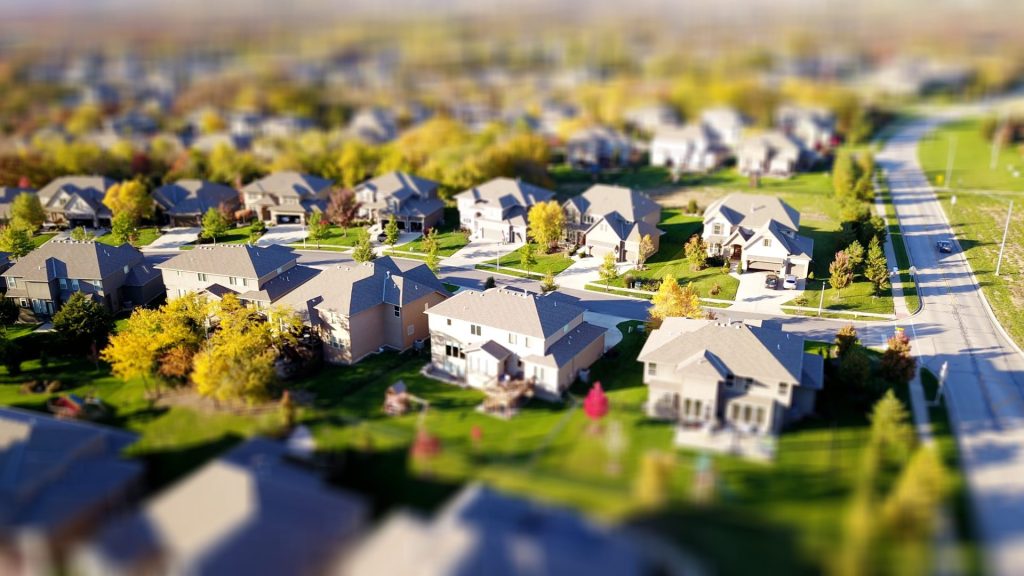
- Choose the right technology
Choosing the right technology is crucial to hosting a successful virtual open house. Various platforms are available, from video conferencing software to virtual event platforms. Make sure to choose a user-friendly platform to handle the number of attendees you expect. Test the platform ahead of time to ensure that everything runs smoothly on the day of the event.
- Create engaging content
The key to a successful virtual open house is creating engaging content. This includes product demonstrations to live Q&A sessions with your overseas client. Tailor your content to your client’s needs and interests, and don’t be afraid to get creative! Consider using multimedia, such as videos and infographics, to make your content more engaging.
- Promote the event
Promoting your virtual open house is as important as planning and creating content. Use social media, email marketing, and other digital marketing tactics to get the word out to your overseas client and their network. Create a landing page for the event and use SEO keywords to improve your search engine rankings.
- Follow up with your client
After the event, make sure to follow up with your overseas client. Send them a thank-you email and ask for their feedback on the event. This will not only help you improve your virtual open house for future clients but will also show your client that you value their input and are committed to providing them with the best possible service.
In conclusion, hosting a virtual open house for your overseas client can be a great way to showcase your products and services without the need for travel. By following these tips and using the right technology and content, you can ensure that your virtual open house is a success and strengthens your relationship with your overseas client.
What are the Advantages and Disadvantages of an Open House?
When selling a property, there are advantages and disadvantages to holding an open house. Here are some of the key advantages and disadvantages to consider:
Advantages of an open house:
- Increased exposure: Holding an open house can attract a larger number of potential buyers to your property, especially if it is advertised effectively.
- Convenience: An open house can be a more convenient option for potential buyers who are not able to schedule a private showing or who want to view multiple properties in one day.
- Feedback: Open houses can provide valuable feedback from potential buyers, allowing you to make improvements or adjustments to your property or marketing strategy based on their comments.
- Competitive advantage: Holding an open house can help your property stand out from others on the market and give you a competitive advantage.
Disadvantages of an open house:
- Security risks: Open houses can attract people not genuinely interested in buying the property and may have malicious intent.
- Disruptions: Preparing for and hosting an open house can be disruptive to your daily routine, and you may need to vacate the property for several hours during the event.
- Low attendance: Despite advertising efforts, an open house may not attract many potential buyers, leaving you with little to show for your efforts.
- Lack of privacy: Having strangers walk through your home can feel invasive, and you may be uncomfortable with the level of access they have to your personal space.
Overall, it is important to weigh the advantages and disadvantages of holding an open house before making a decision. Consult with your real estate agent, do a trial run and get feedback to determine if an open house is a good fit for your property and market.
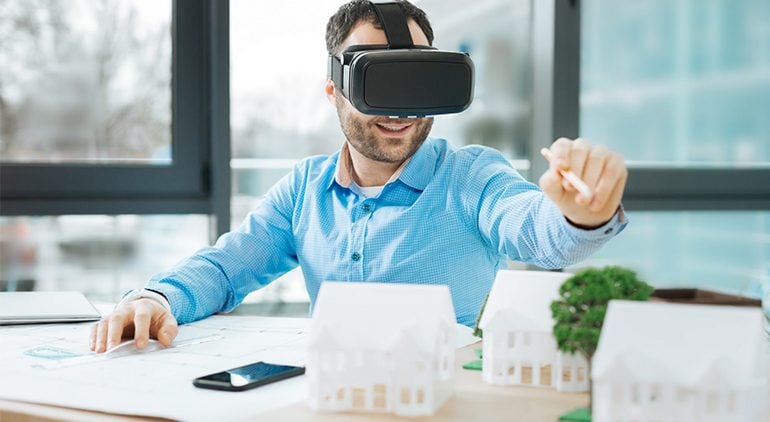
Is it different from a ‘broker’s open house’?
Yes, a broker’s open house differs from a traditional one. While a traditional open house is designed to attract potential buyers or renters, a broker’s open house is intended for real estate agents and brokers to view the property and provide feedback to the listing agent.
During a broker’s open house, the listing agent invites other agents and brokers to view the property during a designated period. This event aims to showcase the property to other real estate professionals who may have clients looking for a similar property or neighborhood.
The broker’s open house is typically held during the day on a weekday when most real estate agents are available. The property may be staged, but it is not as important as it would be for a traditional open house. Instead, the focus is allowing agents to see the property and share their thoughts and opinions with the listing agent.
Preparing the property for an open house can help attract potential buyers and increase the chances of a successful sale. Consider working with a real estate agent who can provide additional guidance and support.
What are the usual staging and preparations for the home as if it was an in-person open house event?
If you are planning to hold an open house, it is important to take the necessary steps to prepare the property to make it as attractive as possible to potential buyers. Here are some virtual options and considerations to help you prepare for an open house:
1) Live open houses on the Internet
During these tours, a real estate agent walks through the property and shows the potential buyer a live video feed of the space (s). This can be a one-on-one viewing with a single buyer, or you can let anyone who wants to join.
2) Virtual open houses that have been recorded
These video tours of open houses are recorded ahead of time so that interested buyers can watch them later. They usually reach a bigger audience because people can listen whenever they want, not just at a certain time.
You could also host a live session using a tool for video conferencing that lets you share your screen. This way, you can play your video while answering questions in the session’s chat.
3) 3D virtual tours
Imagine using Google Street View to look around inside a house. These tours are 3D models that people can click through to move down hallways, into rooms, and up and down floors at their own pace:
View Brittany’s exclusive listing of high-end homes without leaving your house. You can take a virtual tour of some of our luxurious houses and lots for sale to see it yourself:
Crosswinds | Luxury Swiss Resort in Tagaytay
Brittany Sta. Rosa | Luxury House and Lot in Santa Rosa
Hosting a virtual open house for your overseas client can be a great way to showcase your property and build a strong relationship with your client.
By following the steps outlined in this guide, including preparing your technology and materials, conducting a walkthrough, and providing follow-up information, you can make sure you have a successful and effective virtual open house experience.
Additionally, by embracing technology and being proactive in your communication, you can overcome the challenges of distance and time zones to provide a high-quality experience that meets your client’s needs and helps you close the deal.
So, get ready to host your virtual open house and show your clients why your property fits their needs!
Suggested Read: Open Floor Plan Designs Brings Your Home Together
Suggested Read: An Easter To Remember At Amore At Portofino
Suggested Read: Open House: What Is It And How It Works
Suggested Read: Serviced Residences For OFWs Checklist
Suggested Read: How To Host An Online Party
“Real estate SEO strategies can help agents and brokers increase website traffic, qualified leads, and sales.”
Without a doubt, the real estate industry is highly competitive, and it takes a lot of study and dedication to make if you want your real estate name out there.
Property listings can reach a wider audience beyond the local area by being visible online. This can attract more potential buyers or renters from different locations, quickly increasing the chances of finding the right buyer or renter. It would be best if you learned how to use search engine optimization online for your real estate website.
For real estate agents, incorporating SEO (Search Engine Optimization) into property listings is important because it helps make the listings more visible to potential buyers and renters online.
By optimizing property listings for search engines, such as Google, Bing, and Yahoo, real estate professionals can increase the chances of their properties appearing higher in search engine results pages (SERPs) when people search for relevant keywords and phrases.
If you want to establish a real estate website so that you can master the art of integrating SEO to your property listings, here are some things that might help you navigate.
SEO for real estate: How to boost your real estate website traffic?
Your company can benefit from various traffic sources, and knowing the distinctions between these various forms of traffic is crucial.
Direct Traffic
Direct traffic is when people who know your brand already visit your website. These are the people who go to your homepage by typing your website’s domain address into their browser. It’s mostly a mix of repeat customers or customers you already have and sometimes vendors or business partners you work with.
Direct traffic is the most valuable because it’s the closest you can get to making a sale. You don’t have to go through a middleman like a search engine or social media platform. People go straight to your website because they want what you offer. Building your brand through multiple channels, like local SEO and social media, is the best way to increase direct traffic.

Organic Traffic
Search engines like Google send organic traffic to real estate websites. Keywords attract visitors. Since this category is free, aim for as many visitors as possible! To boost website traffic, hire estate agent SEO experts. Try these simple methods to increase organic search traffic:
To be clear, write a topic-focused on your site. Avoid keyword stuffing and duplication.
Use specific long-tail keywords. Long-tail keywords with low competition and high search volume help search engines understand your site. This boosts Google and Bing rankings!
Social Media
Estate agencies must be active on social media. Having a following you can direct to your website is more important. Social media marketing for estate agents can help you reach your audience and build your brand.
Creating social media posts that tease exciting upcoming content is one of the best ways to promote your business. You can promote your services in this post and provide a link so interested parties can learn more. Use hashtags that will help people find you when posting on social media.
Video Marketing
Video marketing is powerful. It’s great for brand awareness, education, and leads. YouTube is the world’s second-most popular search engine. You’re missing a huge opportunity if you’re not using it to drive traffic to your website. Descriptions and CTAs can increase site traffic.
Video marketing’s growth is justified. Many studies show that estate agent video marketing is the best way to reach and engage your audience. Estate agency websites demonstrate this best. Video boosts traffic, leads, and inquiries for estate agents.
Paid Search
The paid search involves bidding on business-related keywords and setting a price per click. Paid search lets you reach people who want your product or service. It’s more targeted than other digital advertising. Thus, smart paid marketing for estate agents may be best for your real estate business.
Paid search ads are great for attracting new visitors. Dynamic ads use this method. These ads let you target potential leads who are more likely to convert. Dynamic ads also change based on keywords searched.
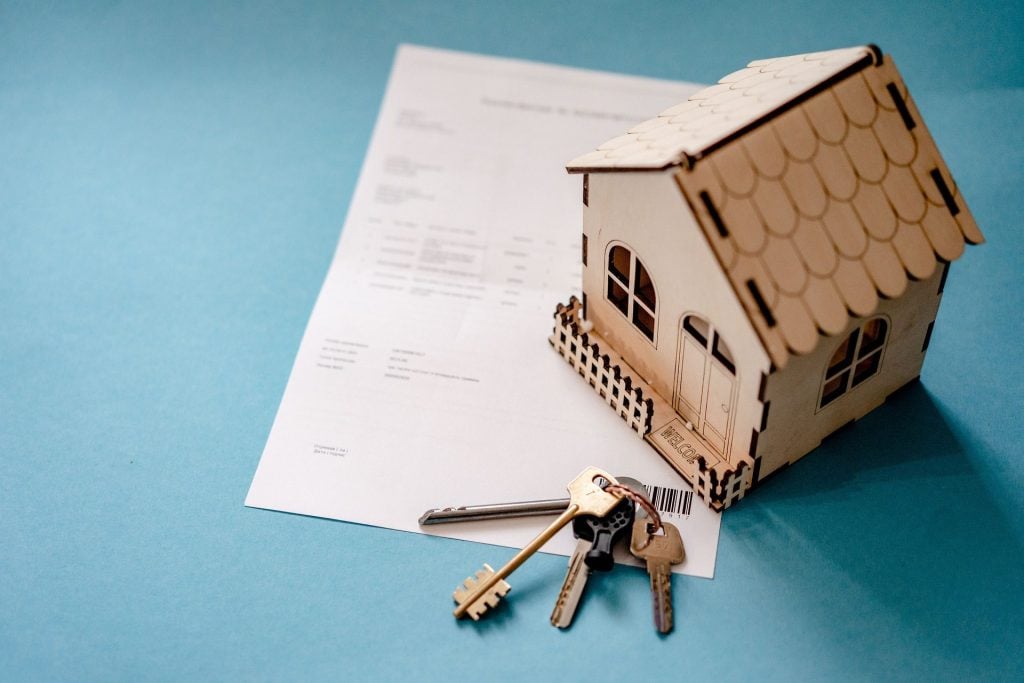
What are the four types of SEO?
On-page SEO: This type of SEO involves optimizing individual web pages to rank for search engines and attract more traffic. On-page SEO includes optimizing page titles, meta descriptions, headings, content, images, and internal links.
Off-page SEO: Off-page SEO refers to the actions taken outside of your website to improve your website’s ranking and visibility in search engine results pages (SERPs). This includes link building, social media marketing, influencer outreach, and other strategies that aim to increase the authority and relevance of your website.
Technical SEO: Technical SEO involves optimizing the technical aspects of a website to improve its ranking in search engines. This includes website structure, speed, mobile-friendliness, schema markup, and other technical factors affecting the website’s performance.
Local SEO: Local SEO optimizes a website’s visibility and rankings in local search results. This includes optimizing the website for local keywords, building local citations and backlinks, and optimizing the Google My Business listing.
Why is Keyword Research Important for Real Estate SEO?
When it comes to real estate keywords, there’s no one-size-fits-all solution. The best keywords for your business will depend on a number of things, such as your target audience, your location, and the type of properties you specialize in. That said, a few general tips can help you choose the right keywords for your business:
- Target keywords that have to do with your real estate business.
- Focus on long-tail keywords, which are less competitive and more likely to result in sales.
- Consider using “negative” keywords to weed out unqualified traffic.
- Monitor your keyword ranking.
- Make a comprehensive real estate SEO strategy.
What Are Keywords for Real Estate SEO?
Keywords for real estate SEO are specific words or phrases people use to search for real estate services online. These keywords can vary depending on the type of real estate service being offered, the location, and the target audience. Here are some examples of real estate keywords:
“Homes for sale”: a common keyword used by people looking to buy a new home. It is a broad keyword that can be targeted by real estate agents, brokers, and home builders.
Example: The largest homebuilder in the Philippines is Brittany which offers homes for sale in impressive areas, including Portofino in Alabang, La Posada in Sucat, Georgia Club in Sta. Rosa, Laguna, The Estates in Cavite, Tagaytay, Baguio, Davao, and a lot more.
“A Real estate agent”: used by people looking for an agent to help them buy or sell a home. It is a broad keyword that individual agents, brokerages, and real estate companies can target.
Example: If you have a hard time looking for a real estate agent who will help you find your new home, consider contacting Brittany’s real estate agent because they have the expertise and knowledge of the local housing market.

“Luxury homes for sale”: you can use this keyword if you want to target people who are looking for high-end properties, this is the keyword to use. It is a niche keyword that can be targeted by luxury real estate agents, brokers, and home builders.
Example: Lorenzo is a luxury home in Daang Hari with 177 square meters of living space, including three bedrooms, a family hall, and two carports.
“Homes for rent”: This keyword is used by people looking to rent a home. It can be targeted by real estate agents, property management companies, and landlords.
“Real estate market trends”: This keyword is used by people looking for information on the current state of the real estate market. It can be targeted by real estate agents, brokers, and companies that provide real estate data and analytics.
These are just a few examples of real estate keywords. Researching and targeting keywords, especially the local SEO for real estate, relevant to your specific real estate business and target audience is important. By targeting the right keywords, you can attract more traffic to your website and generate more leads on your real estate.
Final Thoughts on Technical SEO for Real Estate Websites
Most importantly, you need to prioritize high-quality content if you want to achieve search engine rankings. Create a blog post advertising your available properties or sharing the story of a successful listing. Come up with some ideas for niche-specific real estate content. A home seller with no prior experience might benefit from some information that a real estate investor would find superfluous. If you want targeted visitors to your website, you need to work content creation into your marketing plan.
With SEO tools in place, you can expect more people to visit your website naturally as they look at your active listings. Real estate agents and brokers can improve their website’s search engine rankings and visibility by implementing technical SEO best practices, such as optimizing page speed, using structured data, and ensuring mobile-friendliness. This can result in increased organic traffic to their website, more leads, and, ultimately, more sales.
Suggested Read: Real Estate SEO: Your Complete Guide to Real Estate SEO in 2023
Suggested Read: Baguio Coding Traffic Apps: Ease Traffic Congestion In The City
Suggested Read: Some Agents Don’t Get Enough Leads, How To Stand Out
Suggested Read: Brittany Leads Digital Search In Luxury Real Estate
Suggested Read: Top Digital Platforms For Luxury Properties
Suggested Read: Advantages Of Investing In Tagaytay
The balcony is one of the most relaxing places in one’s home. Whenever you want a breath of fresh air, this is the first place you’ll think of.
As such, it should be a place of utmost comfort and relaxation. However, the al fresco nature of balconies results in poor furniture choices, as people tend to forget that balconies are prone to weather conditions.
To ensure that your balcony does its part in providing you with comfort, we’ve provided you with a guide on how to make the most out of your outdoor balconies through wise picking of weatherproof outdoor furniture.
What should I look for in Outdoor Furniture?
There is more to furniture picking to just the outdoor appearance of your furniture. Here are some of the factors that we deem important when picking your outdoor furniture.
Functional Furniture & Outdoor Furniture
Of course, the furniture that you choose should be something you can see yourself using often. To make the most out of your purchase, pick furniture that is able to provide you with more than just comfort and aesthetic pleasure.
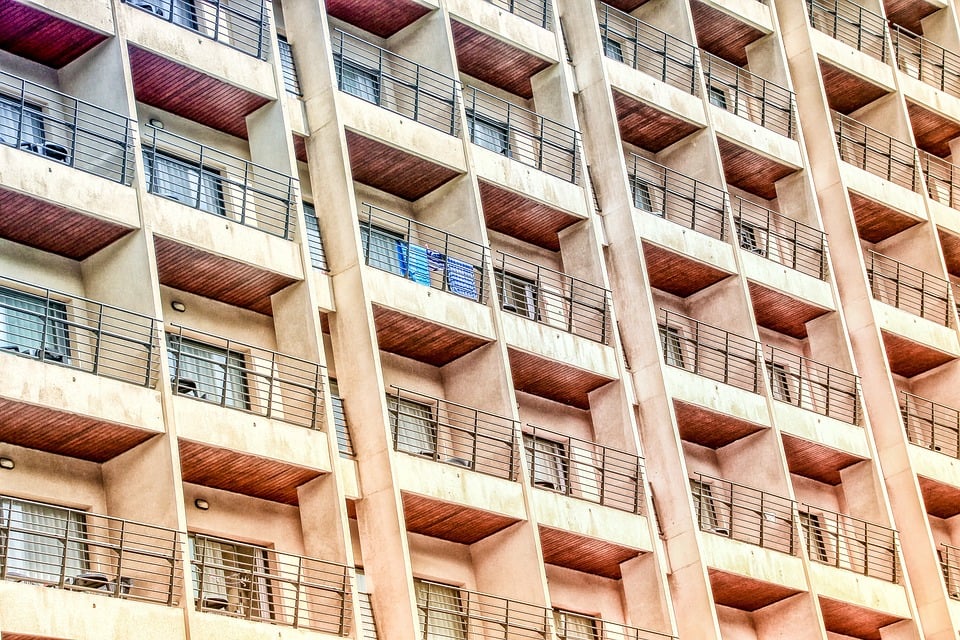
Adequate Space & Outdoor Furniture
Balconies are often small in nature, so always take into consideration the size of your balcony when choosing furniture. Don’t choose something too small, or something that won’t fit your balcony.
Make sure that your outdoor furniture doesn’t make your balcony appear cramped, yet also not underwhelming.
Durability & Outdoor Furniture
Due to changes in the weather, you must ensure the sustainability of your furniture. Weatherproof furniture is a must when it comes to dealing with balconies. Also take into consideration the number of times that you can visualize yourself using the furniture.
Durability is very important because getting furniture in and out of balconies is a tedious task, so you’ll want to minimize the number of times that you’ll have to move furniture around here.
Affordability & Outdoor Furniture
Price is always an important factor in any purchase. Since outdoor furniture must be weatherproof, take into consideration that prices may be a bit higher than their regular counterparts.
Weigh the pros and cons into getting the furniture you have in mind, and make sure that the price you’re getting for your outdoor furniture is worth it.
A Preferred Theme & Outdoor Furniture
As a comfort place in the home, the aesthetic of your balcony should also be given importance. Having a theme in your balcony which matches the rest of your home will give you a calmer feeling and a sense of belongingness.
Following this, the furniture that you pick for your balcony should match well with the overall theme you choose. It is always much easier on the eyes when things seem to fall just right in place.
Stylish Furniture & Outdoor Furniture
In conjunction with your theme, it’s good to have style in your furniture. Whether you prefer minimalist or grand styles, shelling out a bit more to give some personality to your furniture can be a good investment.
Something like trading a regular chair to an egg-shaped one can already add so much more appeal to your balcony.

A Friendly Nature
Balconies are also a great place for conversation. Some of the deepest conversations can be made when partnered with the right atmosphere. As such, it’s good to have a place where you can comfortably enjoy a leisurely talk when you have someone over.
Top recommendations for Your Outdoor Furniture
With all those characteristics taken into consideration, here are some of our top recommended weatherproof outdoor furniture to fit you balcony.
Floor Tiles
The floor is equally as important as the objects placed above it. A striking floor design can leave a huge impact on visitors. Beautiful floor tiles are an absolute must, and it’s especially important if you decide to proceed with low-levelled furniture, such as bean bags or mats.
Greenery
Being surrounded by nature is always pleasing. A literal breath of fresh air, having greenery is a staple for most balconies. Potted plants are the ones most famously used in balconies, given that they are usually small in nature and don’t pose much as an obstacle.
Privacy Screens
As a place of comfort, you’d want to spend your times on the balcony as private as possible. However, this may not always be the case, especially if you live in an area close to your neighbors. Privacy screens to give you that same feeling and are often installed by using either fabric or bamboo screens.
Decorative Wall
Given that some balconies may be small, space can be quite limited. Decorating the walls of your balcony can be an efficient way to make your balcony look livelier without having to overcrowd your floor area. Planter walls are also a famous installation in balconies.
Comfortable Seating
Of course, you’ll be spending most of your time just lounging around in your balcony. Hence, where you sit is one of – if not the most important furniture you’ll need. Make sure that the seats you choose are one you can find yourself enjoying for extended periods of time – a pallet sofa or pallet couch is one of our top recommended comfort seatings in balconies.
Personal Decorations
Lastly, don’t be afraid to add some personal touches here and there in your balcony. To give the best feeling of comfort, both your body and mind should be at ease. Being able to personally decorate your home is also one of the best ways to make your home more warming to live in.
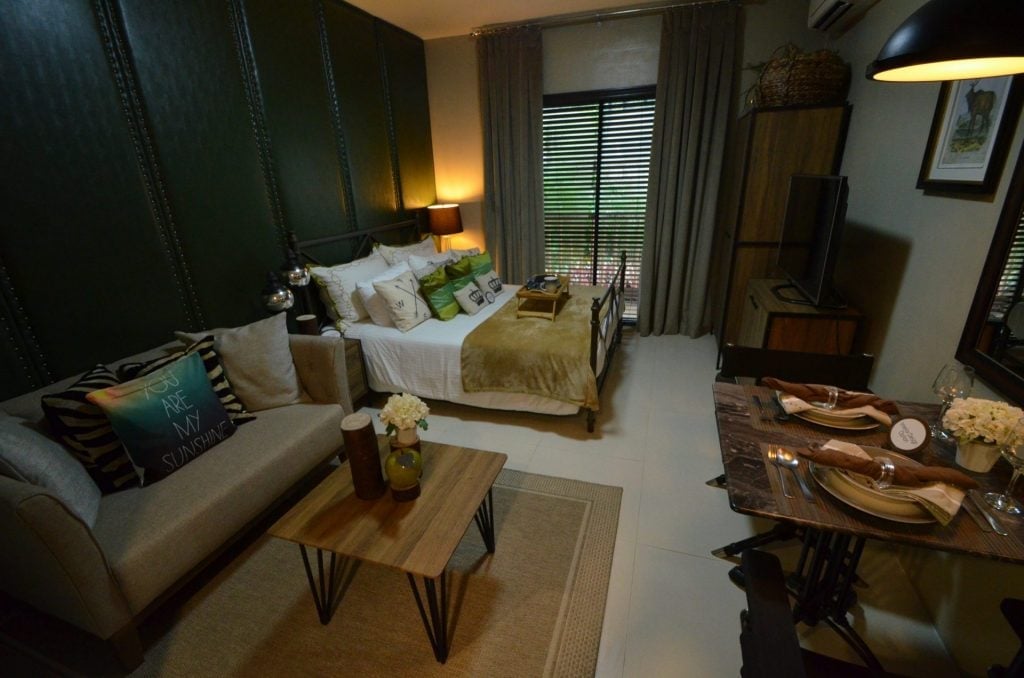
Peak Comfort in the Luxury Homes of the Elite
The balcony is only one of the many areas of the home that you spend time in. As the place you’ll spend most of your life in, all aspects of your home should spark joy. When it comes to providing the best daily living experience, nothing comes close to the luxury living by Brittany.
As home to only the most beautiful houses in the Philippines, Brittany ensures top quality in all of its real estate development projects. From the Swiss-inspired homes in Tagaytay, and now, to the luxury condominium in Davao.
Luxury Living in Davao
If you’re looking for a condominium for sale in Davao, then this is the place for you. Brittany’s luxury condo in Davao simply cannot be compared to others given its exquisite portrayal of luxury living.
With world-class amenities and services, this condominium in Davao is sure to exceed even the highest of your expectations. Undoubtedly, Brittany will be able to give you the perfect home with the perfect balcony to start on with this one of a kind luxury condo in Davao.
Suggested Read: The Luxury Of Staying Connected With Nature At Alpine Villas
Suggested Read: Condo Gardening: 10 Household Items To Get You Started
Suggested Read: Second Home: Why People Still Look It
Suggested Read: Balcony Ideas For Your Luxury Condo
Suggested Read: 5 Styles For Your Balcony Space
Republic Act No. 11534, also known as the Corporate Recovery and Tax Incentives for Enterprises (CREATE) Act was created by Congress as a response to the COVID-19 pandemic to relieve domestic and foreign corporations doing business in the Philippines. This act amended several provisions of the old Tax Code, focusing on lowering corporate income tax rates and rationalizing fiscal incentives so it can attract foreign and local investments in the Philippines.
Former President Rodrigo Duterte signed the Create Law Philippines on March 26, 2021, along with several vetoed provisions.
CREATE Act was initially called the Tax Reform for Attracting Better and Higher Quality Opportunities or the TRABAHO Bill but failed to pass Congress. Later on, it was renamed to Corporate Income Tax and Incentives Reform Act or CITIRA but still failed to pass Congress as the bill was deemed non-priority and non-urgent during the COVID-19 outbreak.
Continue reading Brittany’s article to know more about the CREATE Law.
What are the Corporate Income Tax (CIT) Reforms under CREATE Law?
Effective January 1, 2021, the corporate income tax rates for domestic and resident foreign corporations are now 25% from the previous 30%, retroactive to July 1, 2020. These CIT rates will be reduced by 1% annually for the next six years and will reach 20% by 2027.
The Minimum Corporate Income Tax (MCIT) rate is also reduced to 1% from the previous 2% gross income from July 1, 202 to June 30, 2023. Take note that MCIT is imposed if a corporation has a negative taxable income or if the MCIT is higher than 30% of Regular Corporate Income Tax (RCIT).
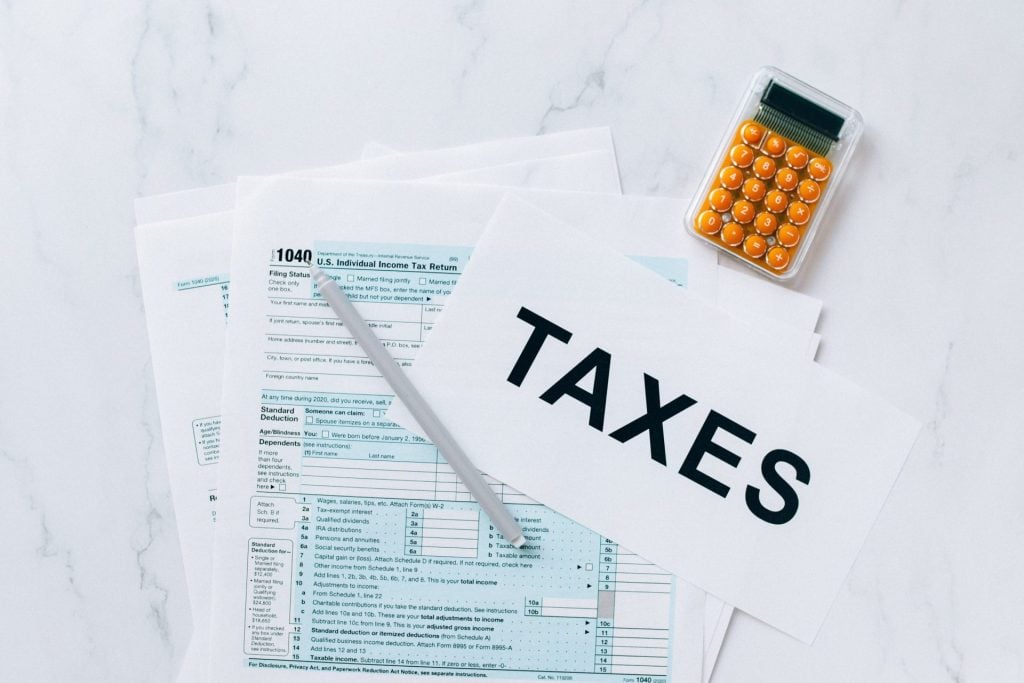
Repeal of Improperly Accumulated Earnings Tax
Under the CREATE Act, improperly accumulated earnings (IAE) are now repealed. IAEs are profits of a corporation permitted to accumulate instead of being distributed by a corporation to its shareholders to avoid income tax with respect to the shareholders of another corporation.
What are the Fiscal Incentives under the CREATE Act?
Under the CREATE Act, the CIT incentives for corporations include the following:
- Income Tax Holiday (ITH) for four (4) to seven (7) years, with a Special Corporate Income Tax rate of 5% on gross income earned in lieu of national and local taxes, or enhanced deductions for five (5) to 10 years
- Duty exemption on importation of raw materials, spare parts, capital equipment, or accessories
- VAT exemption on importation and VAT zero-rating on local purchase
- Qualified domestic market enterprises are also entitled to four (4) to seven (7) years of ITH
What are the Transitory Provisions for Existing Registered Projects or Activities?
- The law provides that those granted an ITH before CREATE Act became effective shall be allowed to continue availing it for the remaining period.
- Unused ITH can be utilized for the specified registration period after the law’s effectivity
- Those granted ITH before the law and entitled to 5% tax on gross income earned (GIE) can still avail it for 10 years
- Availing of the 5% tax on GIE before the law can still continue for 10 years
What are the Value-Added Tax (VAT) Exemptions?
The VAT exemptions under the CREATE Act are as follows:
- Sale or distribution, importation, printing, or publication of any material covered by the UNESCO agreement including digital and electronic formats for educational purposes
- COVID-19 drugs, vaccines, and medical devices
- COVID-19 personal protective equipment production materials, such as capital equipment, spare parts, and other raw materials
- Drugs for the treatment of COVID-19 approved by the FDA for use in clinical trials, including raw materials directly necessary for the production of such drugs
- Sale of prescription drugs and medicines for cancer, mental illness, tuberculosis, diabetes, high cholesterol, hypertension, and kidney disease (beginning January 1, 2021)
What is the Sunset Provision?
The Philippine government has included a two-year extension to the ‘sunset’ provision for firms currently registered with the Philippine Investment Promotion Agencies and paying the five percent gross income earned (GIE) tax incentive. This provision has been extended by two years under the CREATE Act.
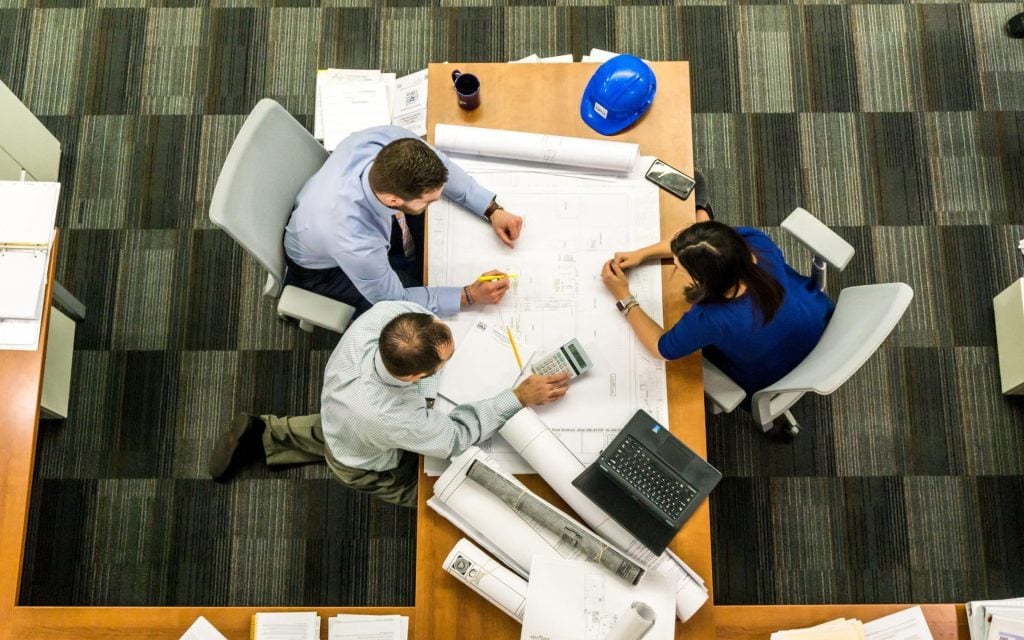
The sunset period in the CREATE Act has four levels:
- Companies benefiting from the GIE tax incentive for 10 years can benefit from a sunset period of four years.
- Companies benefiting from the GIE tax incentive for five to 10 years can benefit from a sunset period of five years.
- Companies benefiting from the GIE tax incentive for less than five years can benefit from a sunset period of seven years.
- Industries or activities that export their products or services and employ at least 10,000 people can benefit from a sunset period of nine years.
However, companies can only be granted the extension of the sunset period if they have been granted the six-year income tax holiday (ITH) that has already ended. It is also important to note that it will not be possible to apply for an extended ITH or an ITH renewal.
What are the Vetoed Provisions in the CREATE Act?
The President of the Philippines vetoed the following provisions in this tax law:
- Increase of VAT-exempt threshold and adjustment every 3 years for selling real property
- The 90-day processing period for general tax refunds, requirements in case of denial, and taxpayer remedy
- Definition of investment capital
- Domestic market enterprises entitled to special corporate income tax rate (SCIT)
- Specific share of the national and local government in gross income earned using the SCIT rate
- New incentives and corresponding period for qualified expansions or new projects or activities
- Extension of new incentives for the same activity for export enterprises registered before CREATE Act
- Fiscal Incentives Review Board‘s (FIRB’s) power to grant incentives for projects or activities with investment capital over ₱1 Billion
- Specific industries under activity tiers
- Provision granting President power to exempt Investment Promotion Agency (IPA) from CREATE Act’s Title XIII
- Automatic approval of incentive applications in case of inaction
What are the Effects of CREATE Act?
The CREATE Act has been labeled as the initial tax reform package that could reduce revenue and the most significant economic stimulus initiative in the Philippines’ past. Here are some of the effects this new tax law has on the way you do business in the Philippines:

Supporting Business Recovery in the Philippines
The Philippines has been significantly affected by the COVID-19 pandemic, resulting in prolonged lockdowns that have impacted the financial capabilities of businesses and citizens. As part of the Corporate Recovery and Tax Incentives for Enterprises (CREATE) Act, the government has introduced measures to provide fiscal relief to businesses, such as lowering the Corporate Income Tax (CIT) rate from 30% to 25% and offering performance-based incentives. The act is expected to help businesses revitalize their operations and increase cost competitiveness.
Attracting Foreign Investors to the Philippine Market
Through CREATE, the Philippine government aims to attract foreign enterprises seeking to penetrate the Asian market by offering fiscal and non-fiscal incentives. The act provides income tax holidays, special corporate income tax rates, and enhanced deductions to eligible corporations, including exporters and critical domestic corporations. It also offers value-added tax exemptions for imports of COVID-19 vaccines and other essential items used to fight against COVID-19. The enactment of CREATE places the Philippine market in an attractive position for investors next to its ASEAN neighbors and improves the country’s fiscal incentives system.
Increasing Job Opportunities for Filipinos
The adverse effects of the COVID-19 pandemic have resulted in many Filipinos losing their jobs, with approximately 3.44 million out of work as of March 2021. The CREATE Act aims to provide more job opportunities for locals by attracting foreign entrepreneurs to do business in the Philippines through performance-based tax incentives and low CIT rates. The act is expected to provide a significant boost to the National Employment Recovery Strategy (NERS) Task Force, the Department of Labor and Employment (DOLE), and the Technical Education and Skills Development Authority (TESDA).
Be in the Know with Brittany Corporation
Get the latest updates from Brittany Corporation. We offer a wide range of luxury homes that would suit your taste and needs. We ensure that you’ll have a world-class living experience for a fraction of the price!
Follow our LinkedIn and Youtube accounts to know more about Brittany Corporation and our Brittany Homes.
Suggested Read: Experience Then Beauty Of Sunsets In Crosswinds Tagaytay
Suggested Read: National Building Code: Everything You Need To Know
Suggested Read: Philippines’ 2022 Strategic Investment Priority Plan
Suggested Read: A Look At The Brittany Salesforce Rewards Circle
Suggested Read: Economic Recovery Forecast
Getting a sofa for your home is one of your biggest investments yet but it is one of the most permanent pieces of furniture at home. So, when you’re scouting for a sofa, give some thought to it and buy the best quality sofa that you can afford.
What are the Features of a High-Quality Sofa?
If you want to have the best sofa at home, there are a few features that you need to look out for:
-
Frame
One of the most crucial parts of a sofa is the sofa frame. The best quality sofa frames are made from kiln-dried hardwoods, like walnut, maple, or oak. They are also considered an expensive type of frame construction, but they will guarantee that your sofa will last longer. So, these types of sofas are worth the investment.
There are also other sofa frames made from softer woods like pine. They are affordable but not as strong as the ones mentioned above.
Finally, a metal sofa frame is a super durable frame, and it is great for a sofa that will have extra heavy use and is most expensive than hardwood frames.
-
Suspension System
We all want a durable sofa in the living room, and that also needs to look into its suspension system. The suspension system consists of springs to support the seat cushions and is crucial to the overall comfort of your sofa. The standard in a sofa is the eight-way hand-tied springs as they are the most comfortable and durable suspension system for your sofa. However, this is also the most expensive.
Another suspension system is the sinuous springs or also referred to as serpentine springs. They are made with heavy-gauge wires that twist into S-shaped coils. Sinuous springs are also recommended if you’re looking for an affordable option.
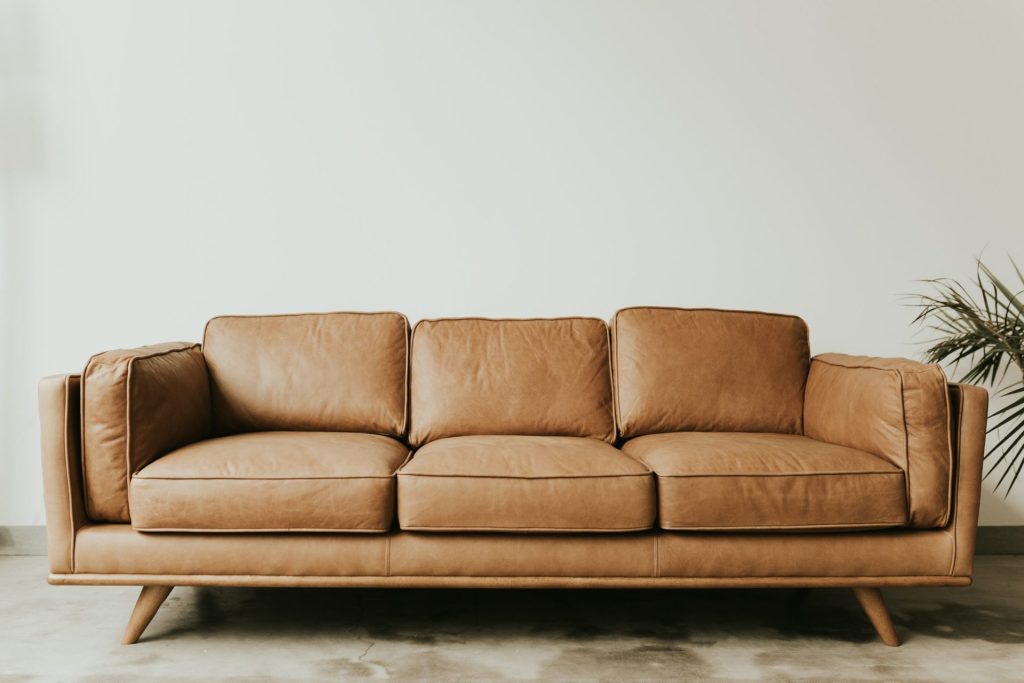
-
How they are joined together
How the frame is joined together with the other parts determines the quality of your sofa. The premier method of joinery is usually the Mortise-and-tenon method as they last longer. However, this may be more expensive.
But there are other frame constructions for your sofa, such as those in that screws are used, reinforcing corner blocks, glue, and dowels. Take note when looking for a sofa for your home, avoid a sofa frame held together with nails, staples, and glue. They have low-quality sofa frames and they might break easily.
-
Cushions
The best quality soft seat cushions are those with a high-density foam core wrapped with a polyester batting or down blend. Back cushions are made from polyfiber or microfiber fill. Back cushions have channel sewn to ensure that the filling won’t move around, which is perfect if you don’t want to have saggy cushions.
-
Fabric
Choosing fabric will depend on your lifestyle. There are various fabric materials from great quality sofa brands, which also include performance fabrics.
Natural fibers like cotton, linen, and wool, and synthetic such as polyester, nylon, and microfiber fabrics are durable. Natural fibers are readily available in various patterns and colors but they are more prone to staining and damage. Synthetic fabrics, on the other hand, are resistant to stains, but they can wrick or attract dirt and pet hair.
There is no one size fits all fabric choice, but you can opt for microfiber. It is a great option for families because it’s durable and easy to clean.
What are the Sofa Fabric Types and Materials?
There’s an array of couch materials to choose from, depending on your needs and lifestyle. Here are some of the common furniture fabrics and materials for your sofa:
Leather
Leather is a highly durable furniture fabric resistant to stains, dirt, and spills. Leather sofa is also easy to clean, and can last for a long time. If you have allergies, leather sofas are a great option to buy.
Cotton
Cotton is the most common fabric for sofas and other furniture. It is a natural material that combines attributes like softness, breathability, and durability. Unfortunately, it is not stain-resistant, and you may need to have this treated to prevent stains.
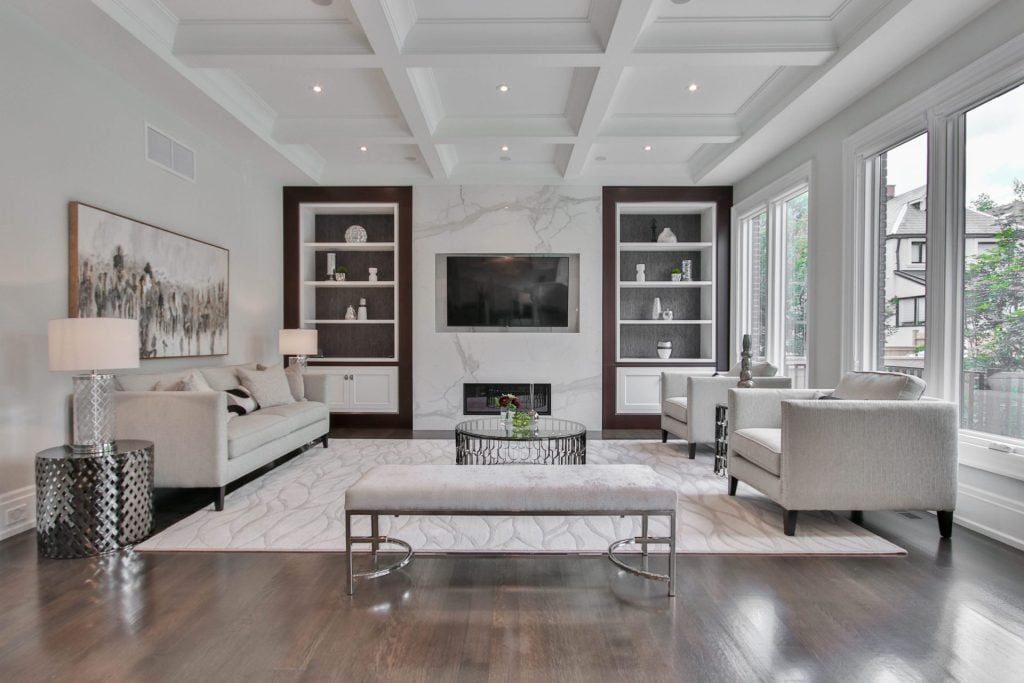
Linen
If you prefer a chic and casual look, having linen in a living room may be your best bet. It adds a stylish but relaxed look to your sofa. Linen is also durable but can stain and wrinkle easily. If you have pets or children at home, linen may not be the best choice for your home.
Wool
A very durable natural fiber, wool is resistant to stains, wear and tear, and wrinkling. You can also clean this easily, but a wool sofa is more expensive than other fabrics.
Polyester
Polyester is a synthetic material that is durable and resistant to fading and wrinkling, making it one of the best options for your sofa. It also holds its shape well and does not sag, unlike other furniture fabrics.
Nylon
Nylon is also a synthetic fiber, and it’s known for its durability and strength. This furniture fabric is usually mixed with other fibers to combine its strength with other fibers.
Microfiber
If you want a soft feel and easy cleanup couch, you may want to look into microfiber couches. It resists liquid and stains really well, so its cleaning is a breeze. However, it clings to dust, pet hair, and dirt, and it may not be if you have pets at home.
How to Spot a Quality Sofa?
-
Test the sturdiness.
The best quality sofas should be solid and heavy. Flop the sofa around, lift it by the corner, and shake it to test if it’s sturdy. If the sofa feels light and wobbly, look for another one, preferably a frame made from kiln-dried hardwood like alder, birch, or oak.

-
Check the cushions.
As mentioned earlier, the denser the foam, the heavier the cushion and the longer it will last. Most cushions have a polyurethane foam core in cheap furniture. However, cushion cores are wrapped with Dacron batting in better furniture. In higher-quality furniture, they have poly-down cushions mixed with the batting, spring-down cushions that have a core of springs surrounded by foam and feathers, and all down, which are all feathers.
- Check the frame and joints.
When it comes to looking for the best sofas, look for those that are double dowelled and fitted with corner blocks that are glued and screwed. High-quality sofas have legs that are part of the frame and not just attached to the furniture.
How to Choose the Best Material for Your Sofa?
Now that you know the basics, it’s time to consider your lifestyle and household to determine what is the most suitable sofa for you. Here are some questions to ask yourself before making a decision:
- Do you have pets or children at home? Having children and pets can be harsh on your furniture, so you may want to buy something more durable so you can easily clean any mess.
- How often do you use your sofa? If you are always in the living room with your family or if you always lounge there, consider determining the comfort level, maintenance, and durability of your sofa.
- Do you or any of your family members have allergies? Choose a sofa that’s easy to clean and won’t collect allergens.
The Most Durable Sofa Brands
Now that you have an idea here are the quality sofa brands you may want to look into. While there can be a correlation that the best quality sofa brands are the most expensive, it’s not always the case. There are affordable sofa brands that are bang for the buck.
These brands are reasonably priced and you’re getting what you paid for.
- Pottery Barn Fremont Roll Arm Sofa
- Homemaker Furniture New Karla Sofa w/ Ottoman
- Weext Niklas Sofa Bed
- FREEMAX Nordic Style 2-Seater Sofa
- Homehuk Hakone Japanese Lazy Sofa/Bean Bag Chair
- IKEA LÅNGARYD Sofa
- Redmond YT-125 Inflatable Air Sofa Cushion Lounge Chair
- Flotti Campbell Sofa Bed
- KRUZO Nordic Minimalist Sofa Chair
- Crate & Barrel Fields Cane Settee
Most of these can be found at big shopping malls or find a reliable local retailer near you.
Get Cozy with Brittany Homes
Finding the perfect sofa brand can be challenging, but we’re pretty sure you learned a lot from this article. And now that you know how to get the best sofa for your home, why not also consider putting them in a cozy home to maximize your luxury living experience?
Brittany Corporation has one of the most luxurious homes that you can get for a fraction of the price. We have condominium and real estate properties for sale nationwide, such as Baguio, Tagaytay, Alabang, Davao, and even Boracay.
Visit our LinkedIn, and Youtube accounts to know more about Brittany.
Suggested Read: How To Clean Upholstered Furniture: 7 Easy Steps
Suggested Read: Pet-Friendly Fabrics For Your Dream Interiors
Suggested Read: Are Smart Sofas Comfortable And Convenient
Suggested Read: 10 Types of Woods Used For Furnitures
Suggested Read: Ten Home Essentials For Your Bedroom
If you want to make your space look appealing, beautiful, or elegant, texture comes into play. It is an essential part of an interior designer’s dictionary, and creating texture is not just about how your decor feels. It is also about “visual texture” — using various materials to create more life in your room.
Without textures, your space will look dull and fall flat. That’s why whenever you want to create vibrancy and warmth in your space, you need to look at the room as a whole and mixed together different materials with different textures.
But what is texture anyway? Keep reading to find out!
What is Texture?
Texture is an object’s physical feeling or visual appearance. In interior design, it is used in the form of tactile objects, such as wood, stone, or fabrics to add interest to a space.
According to Tiffany Leigh of Tiffany Leigh Design, “in interior design is about creating tactile moments that invite touch.” She also added that it is the appearance, feel, or consistency of a surface or material.
A good example of it is lighting. While it may be neither physically nor visually textured, it is one of the biggest contributors of it in your home. It gives off a vibrant and ambient glow that can make your space softer.

Why are Textures Important?
It Contributes Balance
Texture plays a crucial role in achieving a balanced and aesthetically pleasing interior design. By incorporating different textures, you can create contrast and highlight important elements within a space while still maintaining balance and cohesion.
Textures can also help to create a focal point within a room, especially when using a monochromatic or analogous color scheme. Contrasting textures can add visual interest and provide a harmonious balance to a space.
It Adds Visual Weight
You can also use textures to create accents. Interior designers use texture to add “visual weight.” Visual weight is how an object or part of the room can draw attention to itself. Having contrasting textures is a good way to make other aspects stand out from others.
Textures can add visual weight and impact to a design, drawing attention to specific elements within a space. By carefully selecting textures, you can create a more engaging and attractive space that is both intimate and inviting.
Similar to color theory, different textures can create different feelings within a space, such as warmth, coolness, or smoothness. It is important to choose textures that complement the nature of the room and the overall design aesthetic, as they will ultimately impact the visual weight of the space.
What are the Different Textures?
The two textures in interior design are:
- Tactile Textures refers to the physical attributes of a surface that can be experienced through touch, such as smoothness, hardness, or roughness. This type of texture has a three-dimensional quality as it encompasses height, width, and depth. For instance, a chair cover that feels fuzzy to the touch is an example of tactile texture.
- Visual Textures is a type of texture that is created to appear different from its actual tactile properties. It is an illusionary or simulated form of texture that lacks actual depth and is therefore two-dimensional. It is typically observed in two-dimensional figures or renderings of objects, and it helps to portray the surface qualities of the object depicted. Examples include fur, canvas, wood grain, sand, leather, satin, eggshell, matte, and smooth surfaces such as metal or glass.
How to Add Elements of Texture in Your Home?
Adding and mixing textures is not just combining different materials. You need to know how to integrate different ways of adding textures the right way. Here are some ways how to add texture to improve the appearance of your home:
Layer Various Textures
Layering textures is the key to producing a scheme full of depth. You can try blending textures so that you’re not relying too much on the finishes of fabric or furniture.
You can try matte versus glazed ornaments on bookcases, book spines on the side table beside a sculpted glass lamp base, and artwork to have the walls feel multi-dimensional.
Martin Waller, the co-founder of Andrew Martin, said that glossy surfaces like polished chrome, shiny marble, and smooth marble in tonal shades, for example, can give a room a modern and sleek textures.
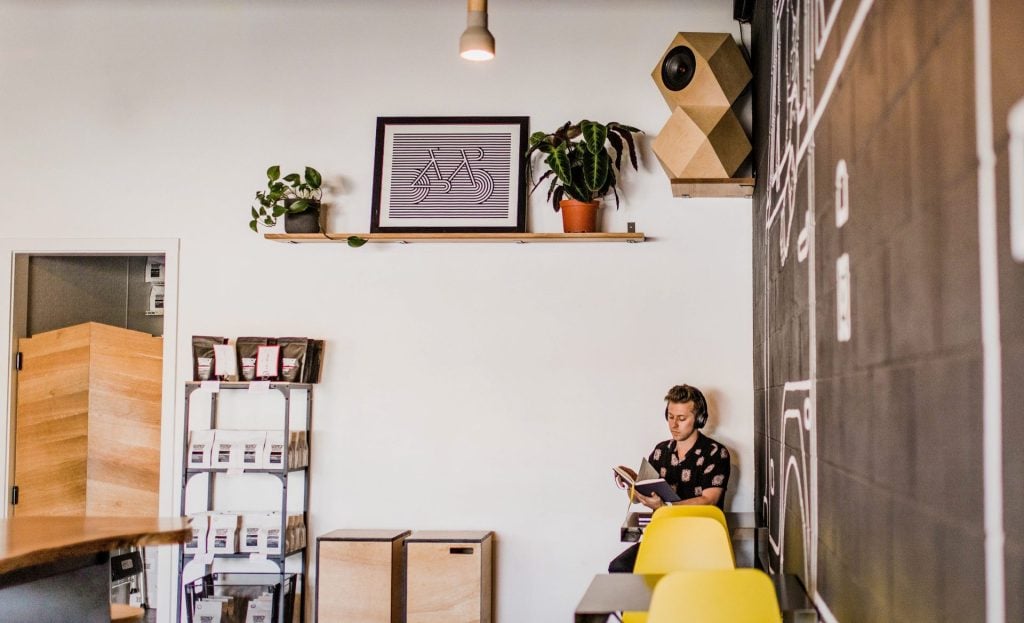
Contrasting Fabrics is the Key
Contrasting fabrics is the key to creating great balance in the space.
If your home’s space has similar shades, you can interrupt its consistency by changing the texture of any fabric to give a less monotonous look.
Make sure to look beyond the obvious areas of fabric like armchairs and sofas, and consider the blinds, curtains, and lampshades. You can also change textures depending on the season. For example, velvet and faux fur are best during the winter or colder season, and cotton and silk cushions will be best in summer.
Add textured furniture
If you want to try something new, furniture texture is worth exploring. Checking out furniture texture can be pretty cool, especially since you’re likely to touch it. Just imagine feeling the smooth marble on a table, chowing down on a rustic oak dining table, or sliding open the drawers of a shagreen-lined chest, and then kicking back on a super plush velvet sofa.
Texture doesn’t have to be obvious. It’s the subtle differences that catch your eye as you take in a room that is the most interesting.
Experiment with Textured Home Accessories
You can use ornaments, vases, sculptures, and mirrors to play with it. Try creating an arrangement using these home accessories of alternating textures to make a statement.
However, do not add too many competing finishes, as your objective is to have assorted characters sympathetic to one another.
Include Plants and Flowers
Plants and flowers are examples of visual textiles, and adding them to your room gives a feel of a fresh and breathable area. Get plants that have different forms, petals, and leaf shapes to produce a textural effect on your room. The best types are those glossy verdant leaves of a palm, and you can pair them with lacquered and strong-line furniture.
Add Lighting
As mentioned earlier, lighting is one of the biggest contributors to add it to your space. If you are getting a lamp, it has a dual texture aspect because the look and the feel of lamps play a crucial role in giving texture.
For example, a high-shine chrome floor lamp creates a different texture from a bronze wall sconce. A warm white light has a softer and more ambient glove, while a cool white light has a brighter glow that can be a bit harsh.
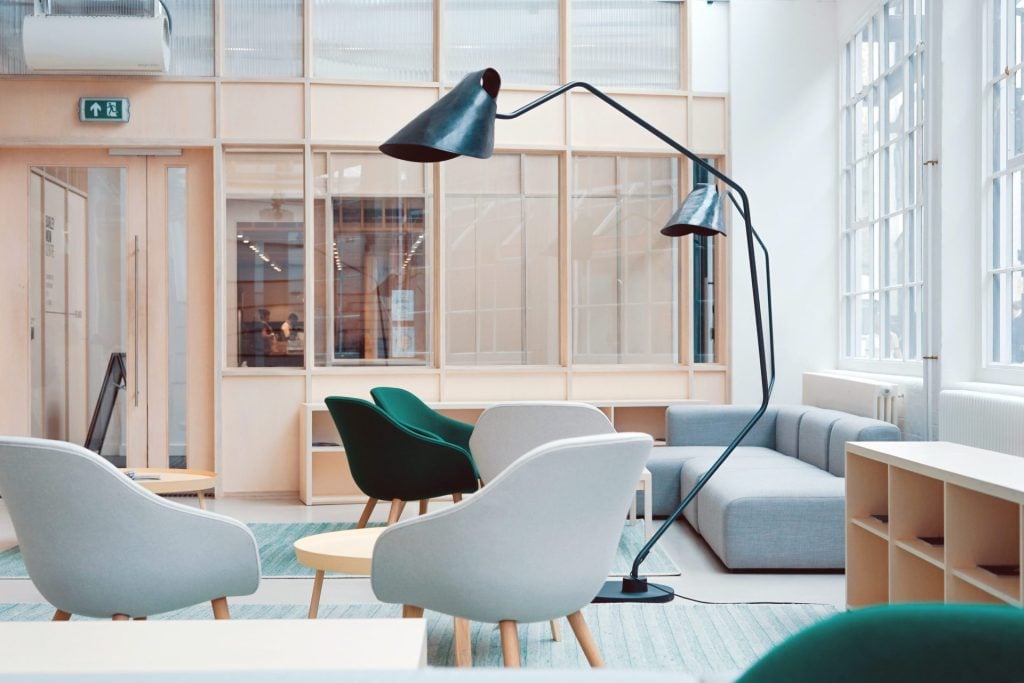
The position of the lights also creates different textures. If you put the light on an unlit corner of your space, it can look like a reading nook.
Focus on Architectural Elements
In the elements of interior design, it has an important role in our spaces. To integrate it in your space, incorporate architectural elements such as wainscoting, picture molding, crown molding, or beadboard. These create depth and dramatic character that will leave your space stunning.
Use Upholstery Techniques
You can use it aside from fabric to create a sense of warmth and to fabricate the design style of your area. For instance, you can use tufted upholstery like a tufted footstool or a tufted headboard.
See Various Textures with Brittany Homes
Brittany Corporation has luxury homes that incorporate various textures, that would make your living experience so much better, such as Bern Baguio.
If you want to know more about Brittany Corporation and its Brittany Homes, you can follow our LinkedIn and Youtube.
Suggested Read: Why Visual Content Reigns In Marketing For Real Estate
Suggested Read: Ideas To Make Your Home Cozier This Rainy Season
Suggested Read: Interior Design Podcasts You Should Listen To
Suggested Read: 2020 Must Have Home Furniture
Suggested Read: 7 Elements Of Interior Design
Real estate is one of the biggest industries in the world. With such a high revenue made annually, real estate is one of the industries people become interested in investing. However, there are many things to be considered when choosing to enter the industry.
It may seem quite overwhelming when you first take a peek at the industry, so it’s better to take it one step at a time. One of the most important topics that you can use to get started is property valuation.
What is property valuation?
Simply put, property valuation is an assessment of a property’s value based on a number of factors associated to the said property. This may include, but is not limited to the property’s location, condition, size, amenities, and other elements.
Property valuation is often done by professionals, which then determine the market value of the property. While it may be the best to hire a professional, it’s always good to know about the process itself to give you some insight to how the value of real estate comes to be.
Knowing how to properly determine the value of a property is one of the major skills that could be the key to your success in real estate endeavors.
How is property valued in the Philippines?
The Philippines is no exception to the popularity of the real estate industry. Many entrepreneurs in the country are involved in real estate due to its high potential.
The process of determining the property valuation in the country is quite similar to the global standard of doing so. Before going into the different methods and approaches to determining value of real estate, it’s important to be familiarized with the concepts and terminologies used in the field.
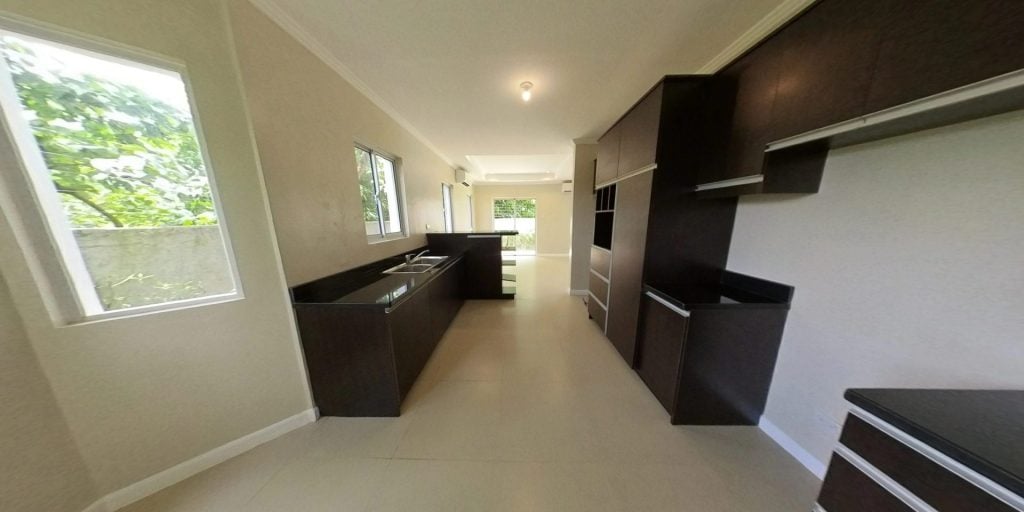
Demand
Demand refers to the desire of consumers towards purchase goods and services. This concept also includes the willingness of consumers to actually purchase the said goods. Demand is also closely related to supply, which refers to the amount of goods actually available to consumers.
The Law of Demand states that demand of a product is inversely proportional with its price. As prices rise, the demand for it decreases. There are many other factors that may affect demand, but price is one of the main contributing factors.
Scarcity
Scarcity is tied directly to demand and supply. When resources are limited and demand far exceeds its supply, these goods and services become classified as scarce goods.
Time is one of the main determining factors of scarcity. Similar to how demand and supply changes over time, scarcity is also prone to changes.
Transferability
Transferability is important in the real estate industry, especially in the Philippines. Transferability is the process of transferring ownership of goods. In real estate, goods have extremely high prices, which makes transferability a necessary concept.
When transferring ownership to a new owner, transferability determines how smooth the process will proceed. This includes but is not limited to transferring ownership of assets, land titles, and funds.
Utility
Lastly, utility refers to the worth of a product or service according to the consumer. As each consumer is different, there is no direct measurement to it. Hence, different models are used to theorize these values.
Consumers want to maximize utility as much as possible, to ensure that they get the value of what they’re paying for. In real estate, maximum utility highly affects a consumer’s decision towards the purchase of goods.
How can I estimate the value of the property?
Once you’re more knowledgeable with the necessary concepts and the connections between them, it becomes much easier to comprehend the tactics used by professionals for estimating property valuation.
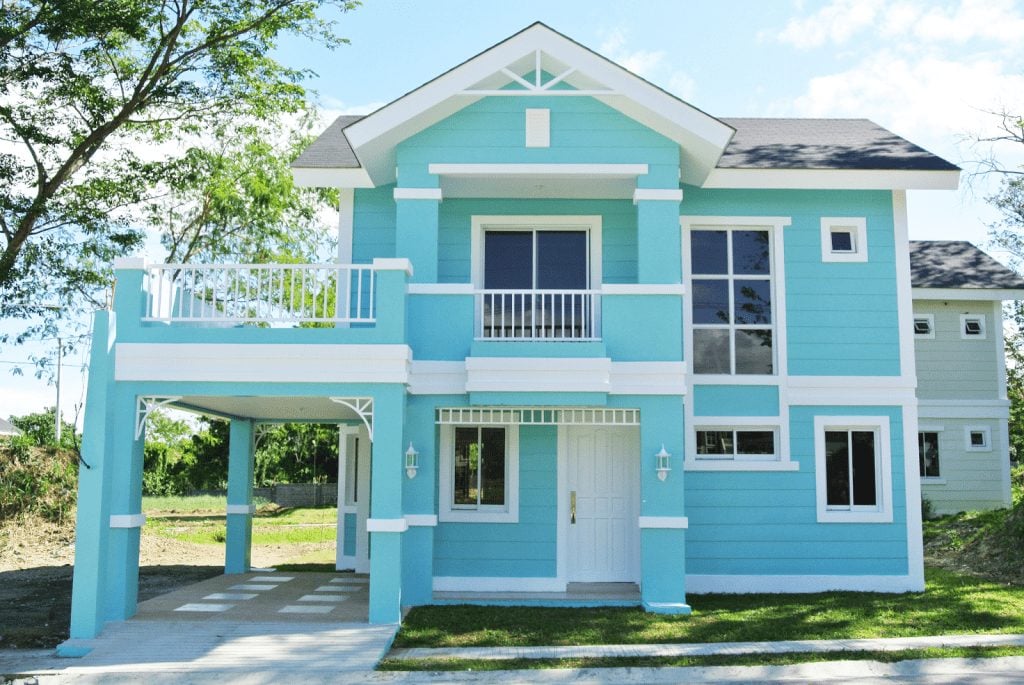
There are different methods and theories used for property valuation, with the top three approaches being the Sales Comparison Approach, the Cost Approach, and the Income capitalization approach.
Sales Comparison Approach
Also referred to as the Market Data Approach, this method focuses on relying from previous transactions. By studying similar properties that have only been recently sold, the value of a property is dependent by comparing them with each other.
An estimation is reached by comparing at least three or four properties with the current one at hand, with each one having been sold in the market within the last year under usual market conditions.
This approach is often used for single-family lots, homes, and land – properties which often have similar characteristics.
Cost Approach
On the other hand, the cost approach works by analyzing each component of a property individually. By having separate estimations for each building in the property, each one’s condition can be taken into consideration.
Depreciation comes into play when approximating costs of each building in the property. The estimations for each are then all added in the end in order to reach a final valuation for the property as a whole.
This approach is often used for real estate which have more than one building or establishment, or those whose property is observed to have physical deterioration.
Income Capitalization Approach
Sometimes shortened to just the Income approach, this method focuses mainly on numerical values. As opposed to the sales comparison approach, the income capitalization approach focuses more on the future value of your property.
By estimating the price that consumers are willing to pay for your real estate, you are able to approximate the annual potential gross income of your property. Experts use a variety of formulas which have been theorized to give estimations as accurate as possible, such as the Gross Income Multiplier Method.
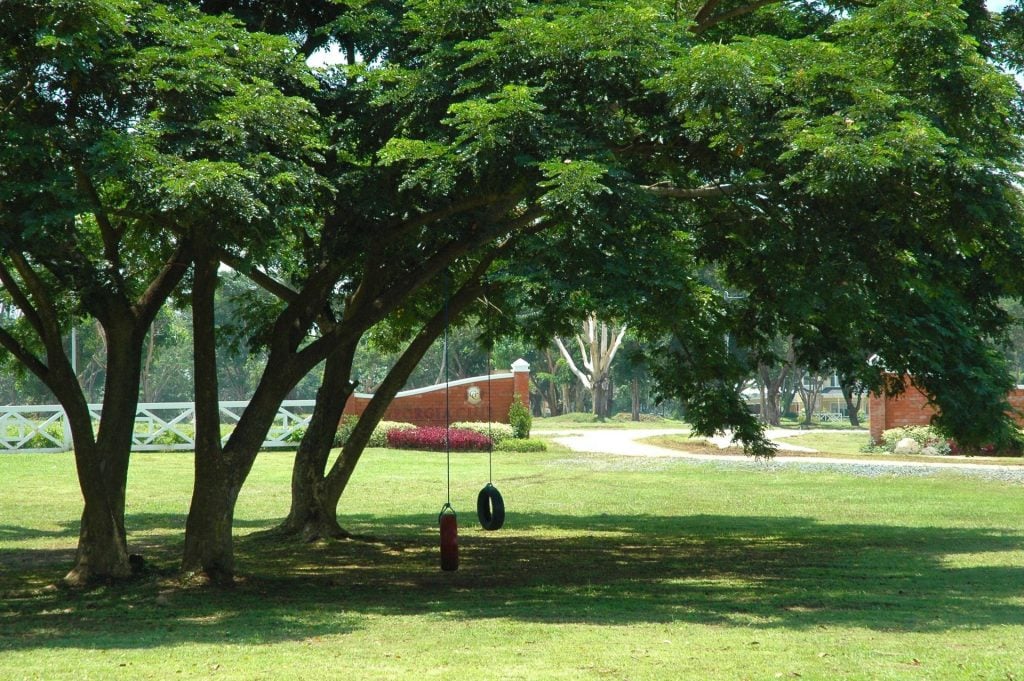
Properties and Valuation
At the end of the day, there is no one proper way to go about property valuation. There are different approaches and methods that can be used, but it always boils down to the quality of your property.
To give you an idea of what a high-valued property shoul d be like, Brittany homes are the prime examples.
Luxury Homes by Brittany
Home to only the most beautiful houses in the Philippines, luxury homes by Brittany assures you of only top-quality homes. The peak definition of luxury living, these homes are guaranteed to give you the best experience in your daily life.
The house and lot properties for sale by Brittany are priced in accordance with the comfort and luxury that it offers. With a wide variety of homes available, from the luxury condo in Tagaytay, the house and lot near Nuvali, or the Daang Hari subdivisions, Brittany lives up to its name as an award-winning real estate development company.
Suggested Read: For Better Or Worse: Financial Questions To Ask Your Partner
Suggested Read: Why Crosswinds Tagaytay Is The Safest Plcae To Live In
Suggested Read: Conversation Starters For Real Estate Professionals
Suggested Read: Ready For Move-In Houses In Alabang
Suggested Read: 5 Luxury Goods Worth Investing In
